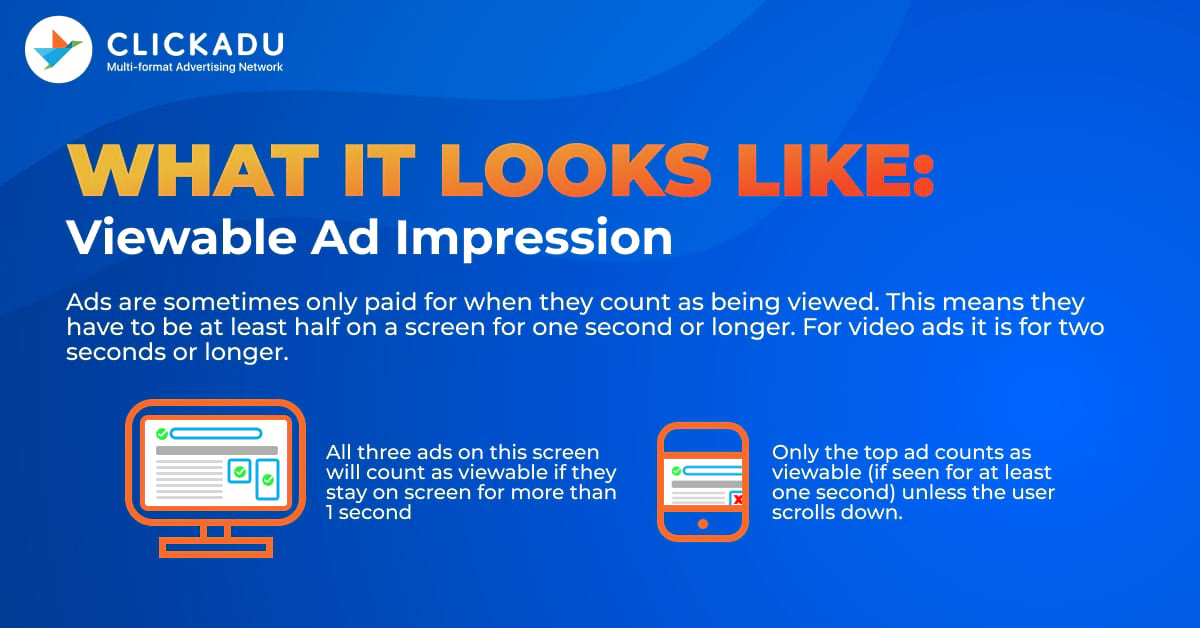
In the dynamic realm of digital marketing, where data-driven decisions reign supreme, ad impressions emerge as a pivotal metric. Measuring the visibility and reach of online advertisements is indispensable for advertisers and marketers aiming to optimize their campaigns. This article delves into the world of ad impressions, covering their definition, calculation methods, best practices, the menace of impression fraud, and key takeaways for successful digital marketing strategies.
What Is an Impression in Digital Marketing?
An ad impression signifies when an online advertisement is fetched and displayed on a user’s screen, whether on a website, mobile app, or social media platform. It’s a fundamental metric that reflects the potential exposure of an ad to an audience.
Each time an ad loads, it is counted as one impression, regardless of whether the viewer engages. Ad impressions provide insights into the initial level of visibility, brand exposure, and potential reach of a campaign.
How to Calculate Ad Impressions
The calculation of ad impressions is relatively straightforward. It is merely the count of times an ad is fetched and displayed. For instance, if an ad is loaded and shown on a webpage 1,000 times, the total ad impressions for that campaign would be 1,000.
However, it’s essential to distinguish between “served impressions” and “viewable impressions.” Served impressions include instances where the ad is successfully fetched, but it might not be entirely viewable by the user due to its placement on the page. On the other hand, viewable impressions consider whether the ad was displayed within the user’s visible screen area, increasing the accuracy of the metric.

Ad Impressions Best Practices
To leverage ad impressions effectively, consider these best practices:
- Optimize Ad Placement: Strategically position ads where they are more likely to capture user attention, such as above-the-fold on web pages or within the content flow.
- Responsive Design: Ensure that ads are responsive and compatible with various devices and screen sizes to enhance the likelihood of viewability.
- Contextual Relevance: Align the ad content with the surrounding context to enhance user engagement and make the ad appear less intrusive.
- Frequency Capping: Avoid repeatedly bombarding users with the same ad, as this can lead to ad fatigue and negatively impact user experience.
- A/B Testing: Experiment with different ad formats, designs, and placements to identify which configurations yield the highest impressions and engagement.
Impressions Fraud
As with any digital metric, the potential for fraud exists in the realm of ad impressions. Impression fraud refers to illegitimate practices that inflate impression numbers artificially. Common types of impression fraud include:
- Bot Traffic: Automated bots can mimic user behavior and generate fake impressions, leading to inaccurate metrics and wastage of ad budgets.
- Ad Stacking: Multiple ads are placed on top of each other, and while only the top one is visible, all of them are counted as impressions.
- Pixel Stuffing: Tiny, invisible ads are placed on a webpage, and when the page loads, these ads are counted as impressions even though they are never seen.
- Proxy Impressions: Impressions are recorded through proxy servers, even when the ad hasn’t been served to a real user.
Advertisers must remain vigilant and collaborate with reliable ad networks and platforms to mitigate impression fraud. Regularly monitoring traffic sources, using third-party verification services, and setting strict viewability standards are crucial steps to combat fraud effectively.
Key Takeaways: Ad Impressions
For Successful Campaigns:
- Ad impressions are a fundamental metric that measures online advertisements’ potential exposure and reach.
- Calculate ad impressions by counting the number of times an ad is fetched and displayed.
- Focus on viewable impressions to ensure greater accuracy in measuring ad visibility.
- Optimize ad placement, design, and context to enhance engagement and visibility.
- Be cautious of impression fraud, which includes practices like bot traffic, ad stacking, and pixel stuffing.
- Collaborate with reputable platforms and employ verification services to combat impression fraud effectively.
In conclusion, ad impressions play a pivotal role in the digital marketing landscape. They offer insights into the initial visibility and potential reach of ad campaigns. Advertisers who master the art of measuring and leveraging impressions while safeguarding against fraud can pave the way for successful and impactful online advertising endeavors.
Table of Contents